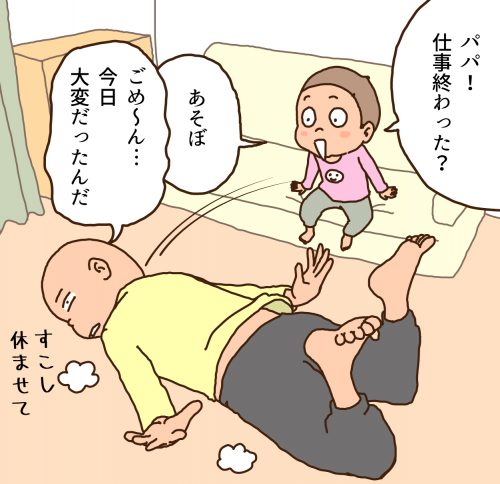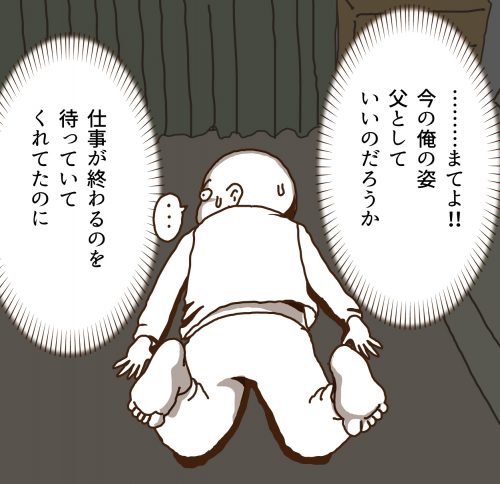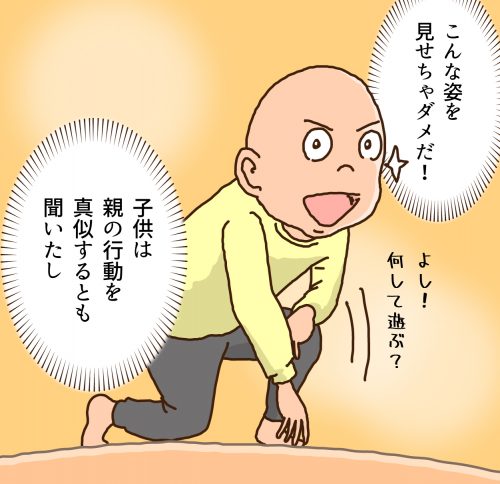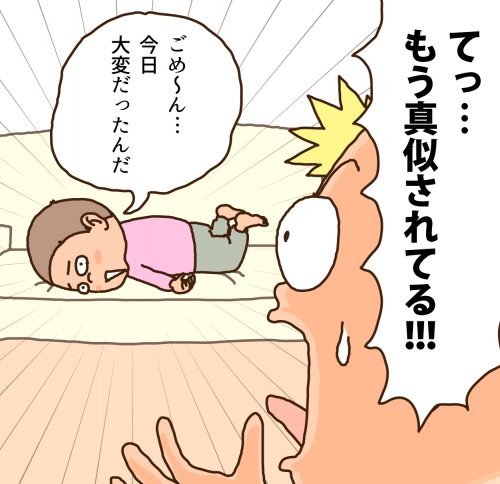Table of Contents
- Parenting cartoon, “Do Kids Imitate Dad?”
- Maybe that’s just copying Dad! Be a “role model” for your children!
Parenting cartoon, “Do Kids Imitate Dad?”






Profile
Eiichi
After working for a design company in Tokyo, he became a freelance illustrator. He is a hard-working father who creates animation, manga, and illustrations, including winning the Yubari International Fantastic Film Festival’s International Short Film Showcase Division Excellence in Animation Award.
Maybe that’s just copying Dad! Be a “role model” for your children!
The kids watch their dad closely.
The points that you wish your children would fix in their lives may be more of an imitation of their father than you think!
This time,
He explains how dads should behave in the home to set a good example for their children!
Maybe that’s just copying Dad! Be a “role model” for your children!
We interviewed Dr. Hideo Izumi, Associate Professor at the Faculty of Human Sciences of Tokyo City University, who has been researching lifestyle habits of children.

Children are wonderful observers.
Children watch their parents more closely than their parents imagine.
For example, even children as young as one year old, who can barely speak, can be seen imitating their mom or dad on the phone, or chatting about something with the TV remote control, etc. In fact, when my daughter was about 4 years old, she had a fight with a friend and said, “If you have something to say, you have a mouth. Use your mouth to say what you want to say! She said, “You have a mouth to say what you want to say. This is a phrase I used to say to my daughter when I scolded her. I was impressed that she remembered it so well.
The parent figure is the “right” answer for the child.
For children, the home is their first “society. Therefore, they recognize that the parental figure in the home is the “correct” one.
If Dad leaves his clothes on and off, it becomes the “right” thing for the child to do. When Mom pays attention to him, he will say, “Because Dad does it too. Therefore, if you want your child to learn something, it is important that you set an example for him or her.
Let’s let Mom and Dad take the lead.
For example, if you want your child to grow up to be able to say “good morning” and “thank you,” you should first make sure that mom and dad take the lead in saying them at home. This way, children will imitate them and naturally acquire the habit of saying “good morning” and “thank you.
When borrowing a toy from a friend, some children cannot say, “Can I borrow it?” Some children cannot say “please” and “thank you” when borrowing a toy from a friend. Some children can only say “tea” when they want tea. These children’s behavior may also reflect their parents’ daily activities.
Even in small conversations at home between husband and wife, or between parents and children, let’s try to make a firm conversational rally, such as “Please give me a hundred,” “Here you go,” “Thank you! etc., in even the smallest conversations at home between husband and wife, parents and children. By doing so, children will naturally learn how to communicate, and they will become children who can say things clearly outside the home.
Telling them off over their heads is counterproductive.
Children are different people from mom and dad, and each child is unique. Trying to force them to do what you want them to do will not resonate with them.
For example, when a child is engrossed in TV or video games, you might tell him or her to “play differently” or “read more books! or “Read more books! or “Read more books!
At times like this, why not casually put other toys in front of them to show them how to play with them, or show them how you yourself enjoy reading books? By showing them how to have fun and giving them a variety of options to choose from, the child’s interest will naturally expand.
Calm and constructive discussion is a plus for children’s development.
Sometimes a father’s image is a good example to his children, and sometimes it is naturally a bad example.
Domestic violence is, of course, outrageous, and so-called “face-to-face DV” has been reported to have serious effects on children’s growth and development, such as atrophying their brains and making them unable to speak.
When differences of opinion arise between you and your mother, it is important to discuss them calmly and constructively. By showing your children the attitude of seeking a compromise through discussion, I am sure they will grow up to be adults who can solve things constructively in the same way.
Do not overdo it. The most important thing is to be considerate of your partner.
You don’t have to “act” like a good dad because you think, “I have to be a good role model for my kids!” There is no need to “act” like a good father. Even if a father tries to be a good father, a child who is old enough to enter elementary school will see right through him and think, “Dad is trying too hard,” and he himself will feel suffocated.
The first important thing is to be considerate of your partner. If the couple has a good relationship and the home is peaceful, the child will feel safe and spoiled at home and be a “good boy” outside.
Raising a child can be a difficult task, but we encourage couples to work together to solve problems, respect each other, and cooperate with each other. Your children will be able to see how you are working together!












